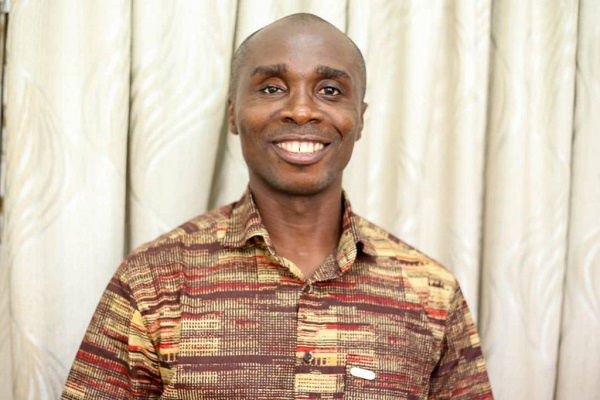The Bank of Ghana (BoG) has triggered a new wave of economic debate after slashing its benchmark policy rate by 350 basis points from 25 percent to 21.5 percent.
The move, announced at the recent Monetary Policy Committee (MPC) meeting, is aimed at easing the cost of borrowing, stimulating credit delivery, and boosting overall economic activity.
According to the Central Bank’s Director of Research, Dr. Philip Abradu-Otoo, the decision was carefully guided by strong macroeconomic fundamentals. “Our international reserves are robust enough to support the local currency and finance imports, while growth is picking up strongly. All this gives us comfort to lower the rate,” he explained.
Dr. Abradu-Otoo noted that the cut would directly influence the lending rates of commercial banks, making credit cheaper for businesses and households. “We expect some immediate impact on the cost of lending to the commercial banks, moving on to impact businesses and individuals,” he added.

Relief Ahead for Borrowers
The BoG’s decision is expected to bring immediate relief to businesses and consumers. Data from the July cut revealed that a 300-basis-point reduction in the policy rate corresponded with a 2.5 percent decline in commercial lending rates.
This time, officials anticipate even more significant cuts in lending rates, which could unlock much-needed credit to key sectors of the economy, particularly manufacturing, agriculture, and services. For small and medium-sized enterprises (SMEs), access to cheaper credit could mean expanded production, job creation, and improved competitiveness in both local and export markets.
“The ultimate goal,” Dr. Abradu-Otoo stressed, “is to improve credit delivery in the country and reduce the financial burden on households and enterprises.”
BoG Rate Cut Too Aggressive Amid Utility Tariff Risks
Despite the optimism, not everyone is convinced that the BoG has struck the right balance. Economist Professor Patrick Asuming has criticized the magnitude of the cut, describing it as premature and overly aggressive.
“Personally, I think that it is quite aggressive. Even if there was going to be a cut, considering that at the previous meeting there was a substantial cut, I would have thought that if there was going to be a cut, it would be rather moderate.”
Professor Patrick Asuming
Prof. Asuming pointed to looming utility tariff adjustments, particularly in electricity and water, as potential threats to the inflation outlook. Rising tariffs, he warned, could quickly erode the gains made in stabilizing prices and undermine the effectiveness of such a steep rate cut.

While the BoG insists that inflation will remain in single digits, Prof. Asuming and other cautious voices suggest that the central bank may be underestimating the risks posed by cost-push factors such as energy pricing.
Non-Performing Loans Remain a Concern
Beyond inflation risks, the challenge of high non-performing loans (NPLs) continues to shadow the credit market. The latest BoG data shows some progress, with NPLs falling to 20.8 percent from 24.8 percent. However, the ratio remains elevated, posing a structural threat to the stability of the banking sector.
Some industry players argue that even as borrowing costs decline, banks may remain hesitant to extend credit aggressively due to lingering concerns about loan recoveries. This, they fear, could blunt the intended impact of the policy rate cut.
Dr. Abradu-Otoo, however, dismissed fears of worsening NPLs, stressing that corrective measures are already underway.
“We don’t think that the NPLs will be that bad or remain that high in the coming months based on some measures that the Bank of Ghana has undertaken.”
Dr. Abradu-Otoo
A Balancing Act Between Growth and Stability
The BoG’s decision underscores the relationship between stimulating growth and safeguarding macroeconomic stability. By cutting the policy rate, the central bank hopes to unlock growth momentum at a time when businesses are seeking affordable credit to expand.
Yet, with potential shocks on the horizon—including utility tariff hikes, volatile global oil prices, and currency depreciation risks—questions remain about whether the bold gamble will pay off.
Critics like Prof. Asuming argue that the BoG’s approach could backfire if inflationary pressures resurface sooner than expected. Supporters, on the other hand, maintain that the cut is a necessary step to sustain economic recovery and unlock private sector dynamism.
What It Means for Businesses and Consumers
For businesses, especially SMEs, the rate cut offers a glimmer of hope in an environment where credit costs have long been prohibitive. Lower lending rates could help firms expand production capacity, invest in innovation, and hire more workers.
Households, too, stand to benefit from lower interest rates on personal loans, mortgages, and hire-purchase agreements. If sustained, the policy could ease the financial stress on families grappling with the high cost of living.
But the true test will be whether commercial banks pass on the benefits to end-users, or whether structural issues in the financial system—such as high NPLs and conservative lending policies—dampen the intended effect.
As Ghana heads into the final quarter of 2025, the BoG’s policy gamble will be closely watched. If inflation remains stable and lending rates fall as expected, the central bank’s bold move could mark a turning point in Ghana’s economic recovery story.
However, if cost-push pressures resurface and banks fail to transmit lower rates to the broader economy, the BoG may face renewed criticism for being overly aggressive.
READ ALSO: Banking Giants & Market Titans Fuel GSE’s Record-Breaking Bull Run





















